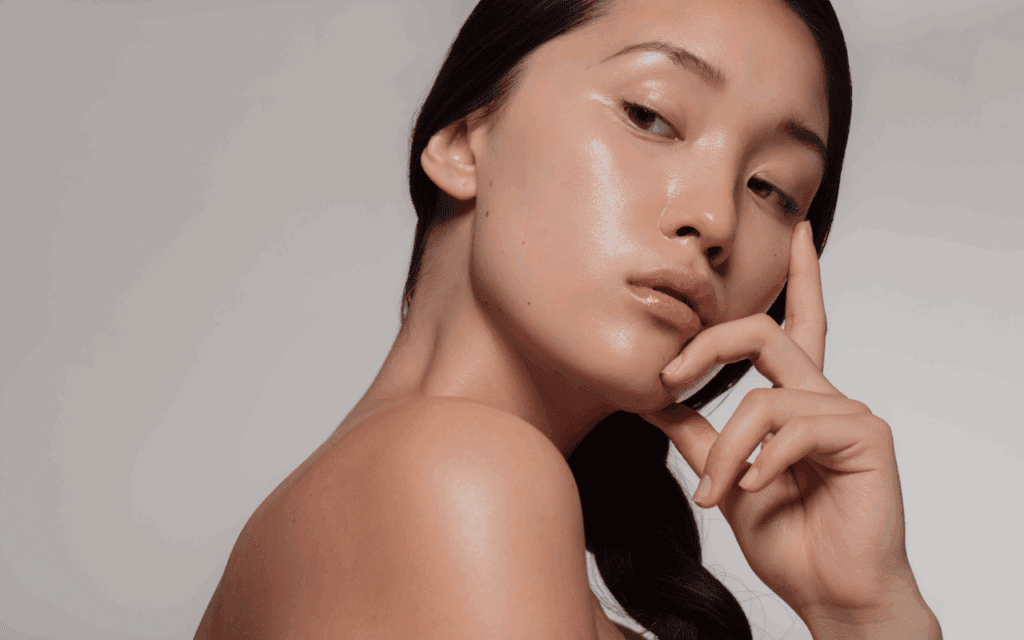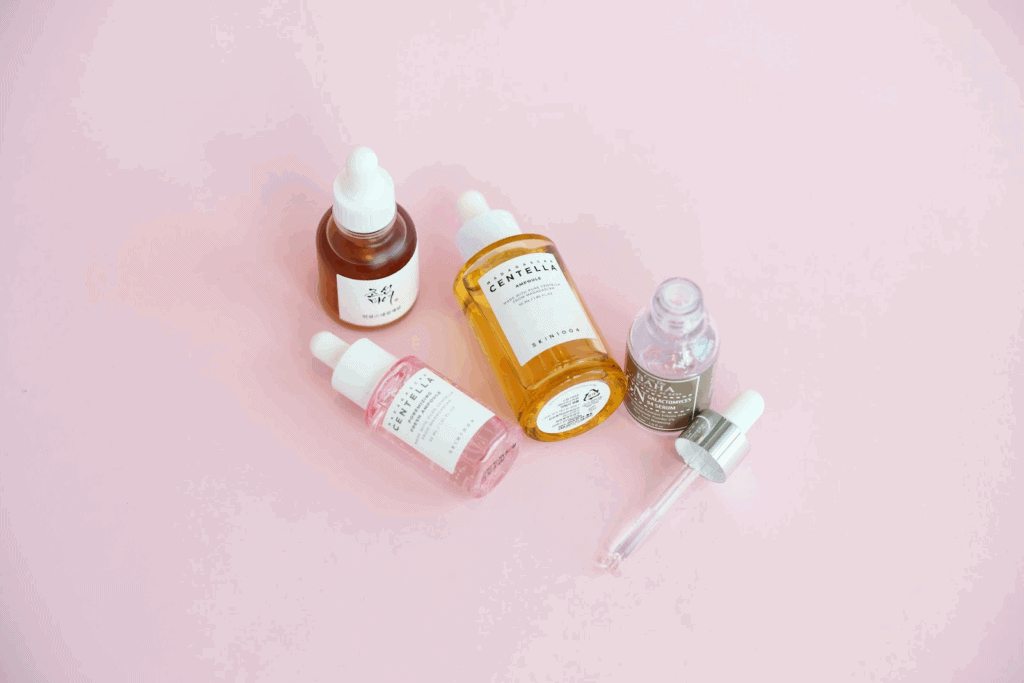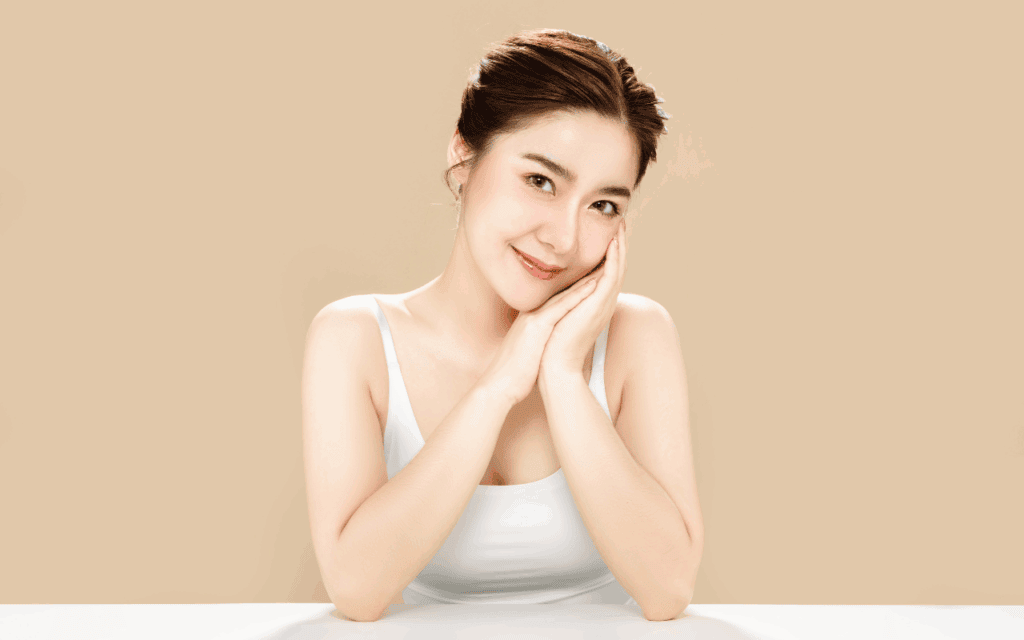The secret to achieving that coveted glass skin isn’t just a trend—it’s a centuries-old Korean philosophy that has revolutionized global beauty standards. Korean skincare represents a fundamental shift from quick fixes to long-term skin health, emphasizing gentle care and consistent hydration over harsh treatments.
Since the 2010s, K-Beauty has transformed how millions approach their skincare routine, moving beyond traditional Western methods to embrace a more holistic, prevention-focused approach. With South Korea exporting $9.3 billion in cosmetics from January to November 2024, this isn’t just a passing fad—it’s a proven system that delivers real results.
What is K-Beauty?
K-Beauty, short for Korean beauty, encompasses both the philosophy and industry of skin care products originating from South Korea. Unlike traditional Western approaches that often focus on covering imperfections, Korean skincare prioritizes achieving naturally healthy, radiant skin through gentle, science-backed methods.
This historical emphasis on natural radiance over heavy makeup established the core principle that still defines K-Beauty today: healthy skin is beautiful skin. Rather than masking problems with foundation or concealer, Korean beauty focuses on creating such healthy skin that little to no makeup is needed.
The global influence of K-Beauty exploded in the 2010s, propelled by the international success of K-pop and K-dramas. This cultural wave introduced the world to Korean beauty standards, particularly the coveted glass skin look—a complexion so smooth, hydrated, and luminous it appears to glow from within.
Today, the K-Beauty market continues its explosive growth across Asia-Pacific, China, and the United States. The industry’s ability to develop and introduce skincare products to market within just two months has become a benchmark, allowing Korean brands to rapidly respond to consumer demands and emerging skin care trends.
The Korean Skincare Philosophy
The cornerstone of Korean skincare philosophy lies in its prevention-first approach, fundamentally different from reactive Western methods. Rather than waiting for skin problems to appear and then treating them aggressively, K-Beauty focuses on maintaining optimal skin barrier health through gentle, consistent care.
This philosophy emphasizes treating your skin like the delicate organ it is. Korean skincare recognizes that the skin barrier serves as your body’s first line of defense against environmental stressors, pollution, and premature aging. By prioritizing barrier protection and hydration, Korean beauty helps maintain skin that naturally resists damage and stays healthy longer.
Central to this approach is the belief in gentle ingredients derived from nature and enhanced by modern science. Traditional Korean ingredients like ginseng, green tea, and rice have been used for centuries and are now reimagined through contemporary biotechnology. These natural components work synergistically with the skin rather than against it, providing nourishment without disruption.
The multi-step routine methodology reflects this gentle philosophy perfectly. Instead of using one or two harsh products that promise dramatic overnight changes, Korean skincare layers multiple lightweight, targeted treatments. This layering technique allows for better absorption and reduces the risk of irritation while delivering superior hydration and treatment benefits.
Perhaps most importantly, Korean beauty culture views skincare as a form of self-care and meditation rather than vanity. The time spent applying toner, essence, and serum becomes a mindful ritual—a daily practice of caring for yourself that extends beyond physical appearance to mental wellness.
This holistic embrace of skin care as wellness has fostered a culture that celebrates “no-makeup makeup” and natural radiance as the ultimate beauty goal. The ideal isn’t perfection achieved through cosmetic coverage, but rather healthy skin that glows naturally and requires minimal enhancement.
The long-term focus of Korean skincare also means realistic expectations about results. Rather than promising instant transformation, K-Beauty emphasizes consistent, gentle care that improves skin health gradually and sustainably. This approach not only delivers better results but also maintains those results over time without causing damage or dependency on harsh treatments.
Achieving Glass Skin
Glass skin represents the pinnacle of Korean beauty achievement—a complexion so hydrated, smooth, and luminous it appears to be made of glass. This translucent, poreless-looking finish reflects light beautifully and suggests optimal skin health rather than heavy product application.
The realistic timeline for achieving visible improvements toward glass skin varies significantly based on starting skin condition, genetics, and consistency of care. Most people notice improved hydration and texture within 2-4 weeks, while more significant changes in pore appearance and overall luminosity typically develop over 2-3 months of consistent routine adherence.
Understanding that glass skin is an ideal rather than a perfectly achievable state for everyone helps maintain realistic expectations. Factors like genetics, age, skin type, and environmental conditions all influence how closely you can approach this goal. The journey toward glass skin should focus on skin health improvement rather than perfection.
External factors significantly impact your progress toward glass skin. A healthy diet rich in antioxidants and omega fatty acids supports skin health from within, while adequate water intake maintains optimal hydration levels. Limiting alcohol consumption and processed foods helps reduce inflammation that can interfere with skin clarity.

Professional treatments can complement your at-home glass skin routine. Hydrafacials provide deep cleansing and hydration, while LED therapy supports cellular repair and collagen production. Salmon DNA, also referred to as PDRN and polynucleotides, is an extremely popular product used in Korea, commonly in conjunction with treatments such as microneedling. The most widely used Korean neurotoxin brand, Letybo, can also be used to achieve the glass skin look. These treatments can accelerate progress but should supplement, not replace, consistent daily care.
The role of lifestyle choices in achieving glass skin extends beyond skincare products. Adequate sleep allows for optimal skin repair, while stress management prevents hormone-related breakouts and inflammation. Regular exercise improves circulation, delivering nutrients to skin cells while promoting healthy glow.
Glass Skin Routine by Skin Type
Different skin types require customized approaches to achieve their version of glass skin. Understanding your skin’s specific needs and adjusting your routine accordingly ensures optimal results without causing irritation or imbalance.
Oily Skin Glass Skin Approach
Oily skin types often have an advantage in achieving glass skin due to natural oil production that creates luminosity. The key lies in balancing oil control with adequate hydration to prevent the tight, stripped feeling that can trigger increased oil production.
Focus on lightweight, gel-based moisturizers and hydrating serums that provide moisture without heaviness. Incorporate gentle chemical exfoliation with salicylic acid to keep pores clear while maintaining smooth texture. Avoid over-cleansing or using harsh products that can disrupt oil balance.
Niacinamide becomes particularly valuable for oily skin pursuing glass skin, as it regulates sebum production while maintaining necessary moisture levels. Layer multiple lightweight hydrating products rather than using one heavy cream to achieve optimal hydration without greasiness.
Dry Skin Glass Skin Strategy
Dry skin requires intensive hydration and barrier repair to achieve glass skin luminosity. The approach focuses on creating multiple layers of moisture and using occlusive ingredients to prevent water loss throughout the day.
Emphasize essence and serum layers containing hyaluronic acid, glycerin, and ceramides. Use richer cream formulations and consider adding facial oils to seal in moisture. The 7-skin method works particularly well for dry skin types seeking glass skin results.
Gentle exfoliation remains important for dry skin but should be limited to once or twice weekly with mild AHAs like lactic acid. Focus more on hydration and barrier repair than aggressive treatment, allowing the skin’s natural renewal process to create smoothness.
Sensitive Skin Considerations
Sensitive skin requires the most careful approach to glass skin, focusing on gentle ingredients and minimal irritation. Build your routine slowly, introducing one new product at a time and monitoring for any adverse reactions.
Centella asiatica becomes essential for sensitive skin glass skin routines, providing soothing benefits while supporting barrier repair. Avoid fragrances, essential oils, and high concentrations of active ingredients that could trigger sensitivity reactions.
Focus on creating a simple but effective routine with gentle cleansing, hydrating toners, soothing essences, and protective moisturizers. The glass skin effect for sensitive skin often comes from improved barrier function rather than dramatic product effects.
Combination Skin Balance
Combination skin requires the most nuanced approach, often using different products on different areas of the face. The T-zone may need oil control and gentle exfoliation, while cheek areas require more intensive hydration.
Consider using lightweight serums and essences throughout the face, then applying heavier moisturizers only to dry areas. Gentle acids can be applied primarily to the T-zone, while soothing ingredients focus on drier, more sensitive areas.
The glass skin routine for combination skin often involves strategic layering—using gel textures in oily zones and cream formulations in dry areas. This targeted approach ensures each area receives appropriate care without compromising overall results.
K-Beauty Trends and Innovations
The Korean beauty industry continues evolving rapidly, driven by technological advances, changing consumer preferences, and environmental consciousness. Current trends reflect both innovation and a return to simplicity, demonstrating the industry’s ability to balance cutting-edge science with timeless principles.
- Skin minimalism (“skip-care”) – Simplified routines with fewer, higher-quality products reduce overload while staying true to the Korean philosophy of gentle, effective care.
- Cica products – Centella asiatica formulations address modern stressors like pollution and screen exposure, inspiring innovations in soothing ingredients and delivery systems.
- Fermented ingredients – Traditional fermentation techniques increase ingredient bioavailability, offering powerful yet gentle solutions for sensitive skin.
- Device innovation – LED masks, microcurrent tools, and ultrasonic devices bring professional-level anti-aging and rejuvenation treatments into the home.
- Clean beauty movement – Transparent formulations, reduced additives, and sustainable packaging, including refillable containers and upcycled ingredients, reflect rising eco-consciousness.
- Personalization technology – Customized formulations based on skin analysis, environment, and individual concerns make skincare more precise and effective.
- Modern-traditional integration – Encapsulation, time-release systems, and synergistic ingredient blends combine traditional botanicals with advanced delivery methods.
For expert guidance on incorporating these K-Beauty innovations into your routine, visit FABrx Studio to consult a leading Dermatologist in NYC.
Common Mistakes and How to Avoid Them

Even with the best intentions, certain errors can reduce your Korean skincare routine’s effectiveness or even harm your skin. Recognizing these pitfalls will help you maintain steady progress toward healthy, glowing skin.
Key mistakes to watch out for:
- Over-exfoliation
- Using acids too often or combining multiple exfoliants can damage your skin barrier, increase sensitivity, and trigger breakouts.
- How to avoid: Start with exfoliating once per week and adjust frequency only if your skin tolerates it well.
- Using acids too often or combining multiple exfoliants can damage your skin barrier, increase sensitivity, and trigger breakouts.
- Product overload
- Introducing too many new products at once makes it impossible to tell which ones are working—or causing problems.
- How to avoid: Add only one new product every 1–2 weeks to track results and avoid overwhelming your skin.
- Introducing too many new products at once makes it impossible to tell which ones are working—or causing problems.
- Skipping patch tests
- Forgoing a patch test may seem like a time-saver but risks serious reactions.
- How to avoid: Test new products on a small area for 24–48 hours, especially if they contain active ingredients or if you have sensitive skin.
- Forgoing a patch test may seem like a time-saver but risks serious reactions.
- Unrealistic expectations
- Expecting instant results can lead to frustration and abandoning effective products too early.
- How to avoid: Understand that visible changes typically take 4–6 weeks, and major improvements can take 2–3 months.
- Expecting instant results can lead to frustration and abandoning effective products too early.
- Mixing incompatible ingredients
- Certain combinations—like vitamin C with retinoids—can reduce effectiveness or irritate skin.
- How to avoid: Research ingredient interactions and separate conflicting products by time of day if necessary.
- Certain combinations—like vitamin C with retinoids—can reduce effectiveness or irritate skin.
- Ignoring seasonal changes
- Using the same products year-round can cause dryness in winter or oiliness in summer.
- How to avoid: Adjust your routine—lighter moisturizers in summer, richer creams and barrier protection in winter.
- Using the same products year-round can cause dryness in winter or oiliness in summer.
- Not listening to your skin
- Continuing to use products despite irritation or changes in skin condition can worsen problems.
- How to avoid: Watch for signs like redness, sensitivity, or breakouts, and modify your routine accordingly.
- Continuing to use products despite irritation or changes in skin condition can worsen problems.
- Incorrect product amounts
- Applying too little may limit benefits, while too much can irritate skin or clog pores.
- How to avoid: Follow usage guidelines and adjust based on how your skin responds.
- Applying too little may limit benefits, while too much can irritate skin or clog pores.
FAQ
How long does it take to see results from K-beauty routine?
Visible results from a consistent K-Beauty routine typically begin appearing within 2-4 weeks for basic improvements like increased hydration and smoother skin texture. More significant changes such as improved pore appearance, reduced hyperpigmentation, and the coveted glass skin effect usually develop over 2-3 months of dedicated routine adherence. The timeline varies based on your starting skin condition, the specific concerns being addressed, and the products used. Patience and consistency prove essential for achieving real results.
Can I use K-beauty products if I have sensitive skin?
Yes, Korean skincare often suits sensitive skin better than harsh Western alternatives due to its gentle, hydrating philosophy. Many K-Beauty products are specifically formulated for sensitive skin using soothing ingredients like centella asiatica, snail mucin, and hyaluronic acid. Always patch test new products and introduce them gradually. Start with basic hydrating products before adding any activities, and focus on fragrance-free formulations when possible.
What’s the difference between Korean and Western skincare approaches?
Korean skincare emphasizes prevention, hydration, and gentle layering, while Western approaches often focus on treating existing problems with stronger activities. K-Beauty prioritizes maintaining healthy skin barrier function through multiple lightweight products, whereas Western routines typically use fewer, more concentrated treatments. Korean philosophy views skincare as self-care and wellness, while Western beauty often treats it as utilitarian maintenance.
Do I need to follow all 10 steps of the Korean skincare routine?
The 10-step routine serves as a framework rather than a requirement. You can customize it based on your skin type, concerns, time availability, and budget. Many people achieve excellent results with 4-6 steps focusing on cleansing, hydration, treatment, and sun protection. The key lies in choosing quality products that address your specific needs rather than following every step religiously.
Are K-beauty products suitable for all skin tones and types?
Korean beauty products work effectively across all ethnicities and skin tones. The focus on hydration, gentle ingredients, and barrier health benefits everyone regardless of background. However, some “brightening” products may need careful selection to ensure they address hyperpigmentation rather than attempting skin lightening. Most Korean sunscreens now formulate without white cast, making them suitable for all skin tones.
How do I know if a K-beauty product is authentic?
Purchase from authorized retailers, official brand websites, or reputable beauty stores to ensure authenticity. Verify batch numbers, check for holographic seals or security features, and compare packaging details with official brand images. Be cautious of prices significantly below market rates, as these often indicate counterfeit products. Research retailers before purchasing and read reviews from verified buyers.
What’s the best way to introduce K-beauty into my existing routine?
Start gradually by replacing similar products in your current routine rather than overhauling everything at once. Begin with one or two Korean products like a gentle cleanser or hydrating toner, then slowly add other steps as your skin adjusts. This approach allows you to identify which products provide benefits while maintaining skin stability. Focus on mastering basic steps before adding specialized treatments or activities.

